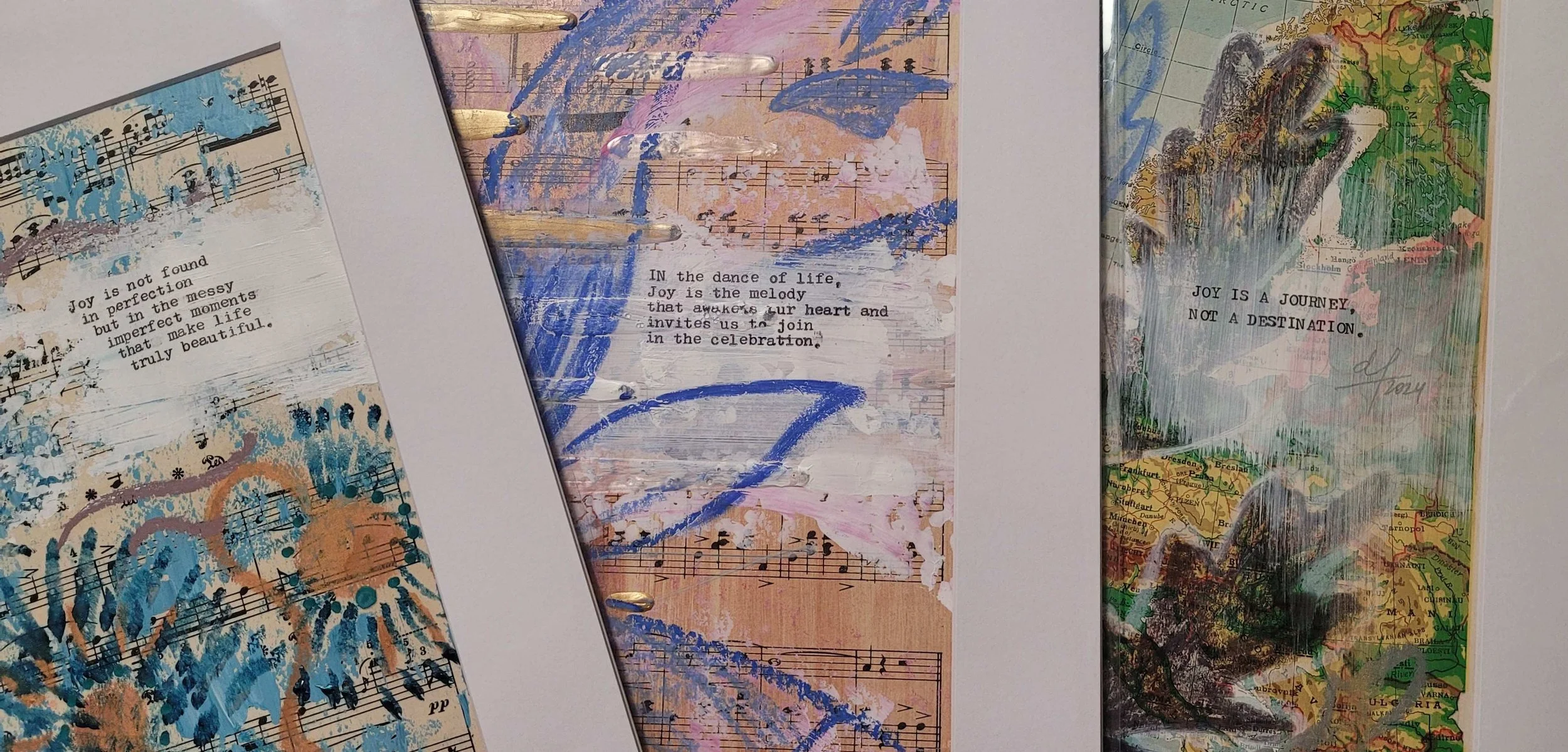24 sekki: introducing a new 100 day project
a poetic way Japan talks about seasons
For the last few years in February, I joined in the 100 day project. It’s a simple idea where you choose a creative project and promise to do it every day for the next 100 days. I’d say it’s a deceptively simple idea, because most of the time, I start strong and then get distracted along the way, and I am sure I’m not the only one. Last year, I decided to paint on vintage sheet music, and midway through the project, I decided to add more texture and borrowed a typewriter from a friend to add my favorite quotes. I even experimented with using a real charcoal from my fireplace as well as fluid paints and old maps, all of which was completely new to me. I fell in love with picking the right colors, medium and quotes for a specific piece of music. Most of the vintage sheet music I found was about 100 years old, printed in 1920s, adding a beautiful underlining to the painting and the whole experiment.
Last year explorations:
Evolution with the typewriter:
(Sold out)
Now, what about this year, you ask?
This year I have decided to paint all 24 sekki for my 100 day project.
What is 24 sekki?
As you may know from my art, I am inspired by nature and seasons. Nature is my sloppyperfect friend, that never rushes, always different, never perfect yet accomplishes whatever it needs. And some of you may know that for the last 712 days (according to my duolingo streak), I have been learning Japanese. It’s been a frustrating process, and I am nowhere near where I thought I would be by now, but I have become fascinated by how poetic Japan’s relationship is with nature and seasons.
Japanese year is divided into 24 solar terms, aka 24 sekki, each lasts about 2 weeks. It reads like a poetic journey nature undertakes from waking up in spring into the deep cold of winter. Additionally, Japan also has 72 microseasons (72 kō) which last about 5 days. Each sekki has three microseasons.
Right now, as of this writing, we are in Usui (雨水) season, which goes from February 18 to March 5. This is the season when “the snow changes into rain and ice changes into water”. The two kanji characters mean: Rain and Water. And this is the second sekki of the year. And three microseasons of Usui are: Rain moistens the soil (Feb 18-23), Mist starts to linger (Feb 24-28), and Grass sprouts, trees bud (March 1-5). Microseasons descriptions are even more poetic than sekki.
If you’re curious and I know some of you are, here are all 24 sekki:
SPRING
1. 立春 "Risshun" Beginning of Spring; Coldest days are almost over and we can feel the sign of spring. Starts February 4
雨水 "Usui" Rain Water; It becomes warmer. Snow and ice start melting and snow becomes rain. Starts February 18
啓蟄 "Keichitsu" Insects Awakening; Insects come out of hibernation. Starts March 6
春分 "Shunbun” Spring Equinox or Vernal Equinox; Length of day and night becomes nearly equal. Starts March 21
清明 "Seimei" Fresh Green; Everything looks fresh and pure. Starts April 5
穀雨 "Kokuu" Grain Rain; Spring rain showers for grains. Starts April 20
SUMMER
立夏 "Rikka" Beginning of Summer; Times when we can feel the sign of summer. Starts May 6
小満 "Shouman" Lesser Fullness; Everything grows. Starts May 21
芒種 "Boushu" Grain in Ear; Times to plant grains. Starts June 6
夏至 "Geshi" Summer Solstice; Length of day becomes longest. Starts June 21
小暑 "Shousho" Lesser Heat; Times when the rainy season ends and it becomes hot. Starts July 7
大暑 "Taisho"6th "Chuu"120° Greater Heat; Hottest days. Starts July 23
AUTUMN
立秋 "Risshuu" Beginning of Autumn; Times when we can feel the sign of autumn
処暑 "Shosho" End of Heat; Times when we feel less heat
白露 "Hakuro" White Dew; White dew stays on the grass.
秋分 "Shuubun" Autumnal Equinox; Length of day and night becomes nearly equal.
寒露 "Kanro" Cold Dew; Cold dews drops on wild grasses.
霜降 "Soukou" First Frost; Times when frost falls
WINTER
立冬 "Rittou" Beginning of Winter; Times when we can feel the sign of winter
小雪 "Shousetsu" Light Snow; Chilly Season. Rain becomes snow.
大雪 "Taisetsu" Heavy Snow; Snow starts falling.
冬至 "Touji" Winter Solstice; Length of day becomes shortest.
小寒 "Shoukan" Lesser Cold; Start of cold season
大寒 "Daikan" Greater Cold; Coldest days
(while there are many websites that have written about 24 sekki, I used these descriptions here)
*****
So in the next 100 days I will paint all 24 sekki, whether on wood, or vintage sheet music or old maps, finding a poem or quote that would explain how I personally perceive that season of nature. It gives me about 4-5 days to paint and research one sekki, which is not too short or too long. I’m not sure which way this creative journey will take, but I already quite serendipitously found several new poets and a new japanese journal on dark blue paper, and I am very excited.
In the next posts, I’ll share the progress on the paintings and go deeper on 24 sekki and microseasons. I will also share more about upcoming art exhibitions.
Thank you for your presence here and being a witness to my creative journey 🌸
with love,
Diana
*******
Do you want to join in with your own 100 day project? It can really be anything, from 5 daily squats to trying a new bread recipe every Sunday to finally having the courage to try watercolor or reading that one book you bought three years ago. I’d love to know. Please share.



